
Translational Vision Science & Technology
Scope & Guideline
Pioneering Open Access Research for Visionary Solutions
Introduction
Aims and Scopes
- Ophthalmic Imaging and Diagnostics:
The journal frequently publishes studies on advanced imaging techniques such as Optical Coherence Tomography (OCT) and OCT Angiography, which are crucial for diagnosing various ocular conditions, including diabetic retinopathy and glaucoma. - Artificial Intelligence in Ophthalmology:
There is a significant emphasis on the application of artificial intelligence and machine learning in diagnosing and managing eye diseases. This includes automated detection of retinal conditions and predictive modeling for treatment outcomes. - Innovative Therapeutic Approaches:
Research on novel drug delivery systems, gene therapy, and new pharmacological agents for treating ocular diseases is prevalent, highlighting the journal's commitment to exploring new treatment avenues. - Clinical and Translational Research:
The journal publishes clinical trials and translational studies that link laboratory findings with clinical outcomes, fostering the development of new diagnostic and therapeutic strategies. - Health Disparities in Eye Care:
A growing focus on understanding and addressing disparities in eye care access and outcomes across different demographics, particularly among underserved populations.
Trending and Emerging
- Integration of Telemedicine and Remote Monitoring:
The rise of telemedicine in ophthalmology is evident, with increasing studies focusing on remote monitoring technologies, particularly in the context of the COVID-19 pandemic, which has accelerated the adoption of telehealth solutions. - Genomic and Biomarker Research:
Research exploring the genetic underpinnings of ocular diseases and identifying biomarkers for early diagnosis and personalized treatment is gaining momentum, reflecting a broader trend in precision medicine. - Multimodal Imaging Techniques:
There is an increasing focus on employing multimodal imaging approaches that combine various imaging techniques to provide comprehensive assessments of ocular conditions. - Artificial Intelligence for Predictive Analytics:
The utilization of AI and machine learning for predictive analytics in ophthalmology is rapidly growing, with studies demonstrating its application in forecasting disease progression and treatment responses. - Patient-Centered Research and Quality of Life Studies:
Emerging themes emphasize the importance of patient-reported outcomes and quality of life assessments in the context of ocular diseases, highlighting the need for research that considers the patient's perspective.
Declining or Waning
- Traditional Surgical Techniques:
As new technologies and methodologies emerge, traditional surgical techniques and their comparative analyses are being published less frequently. There is a noticeable shift towards minimally invasive and robotic-assisted surgical approaches. - Basic Science Research Without Clinical Application:
Papers focusing solely on basic science without direct translational relevance to clinical practice are becoming less common, as the journal prioritizes studies that demonstrate clear applications in patient care. - Invasive Diagnostic Procedures:
There is a declining trend in studies that rely on invasive diagnostic techniques, as non-invasive imaging and diagnostic methods gain preference for their safety and patient comfort.
Similar Journals
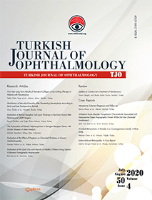
Turk Oftalmoloji Dergisi-Turkish Journal of Ophthalmology
Empowering Ophthalmologists with Cutting-Edge InsightsTurk Oftalmoloji Dergisi - Turkish Journal of Ophthalmology is a premier peer-reviewed publication dedicated to the field of ophthalmology, published by GALENOS PUBL HOUSE. Since its inception in 1997, this Open Access journal has championed the dissemination of high-quality research, fostering an inclusive environment for sharing knowledge and advancements in eye health. With an ISSN of 1300-0659 and an E-ISSN of 2147-2661, the journal serves as a vital resource for researchers, clinicians, and students interested in the latest findings and innovations in ophthalmic sciences. Although its coverage in Scopus has been discontinued since 2017, the journal has garnered a significant rank of 80 out of 114 in the field of Medicine – Ophthalmology, highlighting its relevance and impact within the discipline. Operating out of Istanbul, Turkey, the Turkish Journal of Ophthalmology continues to be a crucial platform for ophthalmologists and researchers to publish their work and advance the understanding of ocular health.

EYE
Illuminating the Frontiers of Vision and Sensory ScienceEYE is a prestigious peer-reviewed journal published by SpringerNature that serves as a cornerstone in the fields of Ophthalmology, Arts and Humanities, and Neuroscience. Since its inception in 1987, this influential journal has consistently maintained a Q1 Quartile ranking across multiple categories, showcasing its commitment to advancing knowledge and research in its disciplines. With a notable impact factor and a robust Scopus ranking—19th in Ophthalmology and 8th in Sensory Systems—EYE is vital for researchers, clinicians, and students alike, providing a platform for groundbreaking studies and critical reviews. While the journal operates under a subscription model, it ensures broad access to high-quality research, facilitating the dissemination of knowledge that shapes the future of eye health and sensory systems. With an address at Campus, 4 Crinan St, London N1 9XW, England, EYE continues to be a leading light in the understanding and advancement of visual health and sensory sciences.

Augenheilkunde Up2date
Transforming Research into Practice in Ophthalmology.Augenheilkunde Up2date is a pivotal journal in the field of ophthalmology, published by GEORG THIEME VERLAG KG, a renowned publisher known for its commitment to advancing medical knowledge. With its ISSN 1616-9719 and E-ISSN 1616-9735, this journal serves as a vital resource for researchers, professionals, and students interested in the latest developments and nuanced discussions in eye health. Although not available as open access, its curated content offers significant insights into contemporary research, clinical practices, and emerging trends in ophthalmology, thus promoting the continuous professional development of its readers. There is an emphasis on providing comprehensive reviews that encapsulate the pertinent advancements in the field, making it an essential publication for those aiming to enhance their expertise in eye care and vision science.

Nepalese Journal of Ophthalmology
Illuminating the Path to Better Eye HealthNepalese Journal of Ophthalmology, established by the NEPAL OPHTHALMIC SOC, is a premier Open Access journal dedicated to advancing the field of ophthalmology. With its ISSN 2072-6805 and E-ISSN 2091-0320, the journal provides an important platform for sharing innovative research and clinical findings in eye health. Since its inception in 2009, the journal has aimed to disseminate high-quality research that addresses contemporary challenges in ophthalmic practices, thus supporting improved patient care and outcomes within Nepal and beyond. The journal has achieved notable recognition, evidenced by its Scopus rank of #267 out of 915 in the field of General Medicine, placing it within the 70th percentile. Researchers, professionals, and students will find valuable information in its comprehensive articles, which cater to a multidisciplinary audience interested in the latest developments in ophthalmology. Emphasizing accessibility, the journal ensures that all published content is freely available, fostering collaboration and knowledge sharing in the global medical community.
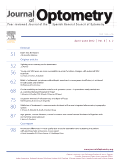
Journal of Optometry
Transforming eye care with cutting-edge research.The Journal of Optometry, published by Elsevier, is a leading open access journal dedicated to advancing the field of optometry and vision science. With an ISSN of 1888-4296 and an E-ISSN of 1989-1342, this journal serves as a pivotal platform for researchers, practitioners, and academics alike to disseminate and engage with high-quality original research and review articles. As of 2023, the journal holds an impressive Q2 ranking in the Optometry category, demonstrating its influence and relevance, particularly as it ranks #2 out of 12 in the Health Professions - Optometry category on Scopus with an 87th percentile. Since becoming open access in 2008, the Journal of Optometry has prioritized accessibility and the exchange of ideas, enriching the scholarly community and enhancing practical application in clinical settings. The journal welcomes submissions that push the boundaries of ocular research, clinical practices, and the education of optometry professionals, making it an essential resource for anyone invested in the future of eye health.
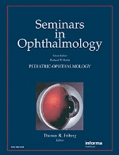
Seminars in Ophthalmology
Fostering Collaboration in Ophthalmic ResearchSeminars in Ophthalmology is a prestigious journal published by Taylor & Francis Inc, dedicated to advancing knowledge in the field of ophthalmology and related medical areas. Established in 1986, this journal has consistently provided a platform for high-quality research and insights, supporting the community with its impactful publications. With an impressive ranking of #55 out of 137 in the Ophthalmology category, the journal currently holds a Q2 quartile in both ophthalmology and miscellaneous medicine as of 2023, reflecting its significant contribution to the discipline. Researchers and practitioners can access a wealth of information covering a comprehensive range of topics, bolstering both clinical practice and academic inquiry. While not an open-access publication, Seminars in Ophthalmology remains a crucial resource for advancing ophthalmic research, fostering collaboration, and disseminating valuable findings in a rapidly evolving specialty.
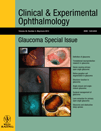
CLINICAL AND EXPERIMENTAL OPHTHALMOLOGY
Advancing the Frontiers of Eye Care ResearchCLINICAL AND EXPERIMENTAL OPHTHALMOLOGY is a leading peer-reviewed journal published by Wiley, renowned for its commitment to advancing the field of ophthalmology. With an impressive impact factor reflecting its high-quality research contributions, this journal is ranked in the Q1 category both in Medicine (miscellaneous) and Ophthalmology, signifying its crucial role in shaping contemporary ophthalmic research. It boasts a remarkable position in the Scopus Ranks, standing at Rank #13 out of 137 in the field of Medicine and Ophthalmology, placing it within the 90th percentile among its peers. Having been in circulation since 1979, this journal encompasses a broad scope of topics that aim to disseminate groundbreaking findings and stimulate dialogue among researchers, clinicians, and students alike. It is easily accessible to a global audience, embodying the principles of open access, making valuable research available to all. For anyone seeking to stay at the forefront of ophthalmology, CLINICAL AND EXPERIMENTAL OPHTHALMOLOGY is an indispensable resource that fosters knowledge and innovation in the ever-evolving landscape of eye care.

Asia-Pacific Journal of Ophthalmology
Exploring the frontiers of eye health research.Asia-Pacific Journal of Ophthalmology is a distinguished open access journal published by the Asia-Pacific Academy of Ophthalmology (APAO), specializing in the latest advancements and research in ophthalmology. Since its inception in 2013, this journal has established itself as a vital platform for disseminating innovative findings and clinical practices across the Asia-Pacific region and beyond. With an impressive Scopus ranking of #10 out of 137 in the field of Medicine (Ophthalmology), placing it in the 93rd percentile, it garners significant attention and respect within the academic community. Currently holding a Q1 categorization in both Medicine (miscellaneous) and Ophthalmology, the journal embraces a broad scope that encompasses clinical studies, experimental research, and reviews aimed at enhancing the understanding and management of eye health. Its open access model since 2019 ensures that all published works are freely accessible, promoting greater collaboration and knowledge sharing among researchers, clinicians, and students. Situated in the Netherlands with a prominent address in Hong Kong, the journal serves as an essential resource for anyone dedicated to the field of ophthalmology.
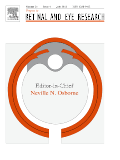
PROGRESS IN RETINAL AND EYE RESEARCH
Illuminating Innovations in Eye ResearchPROGRESS IN RETINAL AND EYE RESEARCH, published by PERGAMON-ELSEVIER SCIENCE LTD, is a premier journal dedicated to the advancement of knowledge in the fields of ophthalmology and sensory systems. With an impressive impact factor and a Q1 category ranking in both Ophthalmology and Sensory Systems as of 2023, this journal exemplifies excellence in research dissemination. Given its stature, it ranks #1 out of 137 in Ophthalmology and #1 out of 42 in Neuroscience - Sensory Systems, placing it within the top percentile of scientific publications in these domains. The journal has been actively contributing to the field since its inception in 1994 and continues to be a vital resource for researchers, clinicians, and students seeking the latest insights and breakthroughs in the understanding of retinal diseases and eye health. While it maintains a traditional subscription model, the journal remains committed to publishing high-quality, peer-reviewed articles that drive forward the frontiers of eye research and therapeutic innovation. With its strong scientific rigor and a vast array of articles, PROGRESS IN RETINAL AND EYE RESEARCH is indispensable for anyone invested in the study of visual sciences.
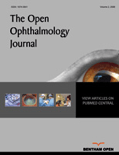
Open Ophthalmology Journal
Illuminating the path to better vision through research.The Open Ophthalmology Journal, published by Bentham Science Publishers Ltd, is a vital resource in the field of ophthalmology, dedicated to advancing knowledge through open-access research. With an ISSN of 1874-3641, it offers a platform for the dissemination of innovative studies from 2011 to 2024, focusing on the latest developments in eye care and vision science. Despite being categorized in the lower quartile (Q4) according to the 2023 rankings, and holding a position in the Scopus Ricks at 113 out of 137 in the ophthalmology domain, the journal serves as a valuable outlet for emerging scholars and seasoned researchers alike to share their findings. The journal's commitment to accessibility ensures that its content is available to a broad audience, promoting collaboration and knowledge exchange. Located in the Netherlands, The Open Ophthalmology Journal aspires to become a cornerstone for those passionate about understanding and improving ocular health through rigorous scientific inquiry.